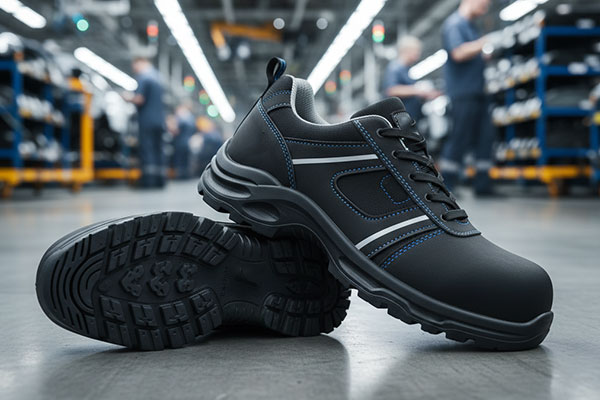What’s the Difference Between S1, S2 and S3 Safety Shoes?
When it comes to workplace safety, choosing the right footwear is just as important as wearing a helmet or gloves. Safety shoes are designed to protect workers from hazards like falling objects, slippery floors, sharp materials, or exposure to liquids. But not all safety shoes are created equal—different standards define their protective features. Among the most common classifications are S1, S2, and S3 safety shoes. Understanding the difference between these categories can help you choose the right footwear for your job.

What Do S1, S2, and S3 Mean in Safety Footwear?
The classifications S1, S2, and S3 come from the EN ISO 20345 standard, which sets minimum safety requirements for protective footwear in Europe. Each level builds on the previous one, adding extra protective features.
Here’s a breakdown:
S1 Safety Shoes
S1 shoes are the entry-level safety footwear with essential protection. They are suitable for dry working environments where liquid exposure is not a concern.
Key features:
- Toe cap protection (usually steel or composite) against impact and compression
- Antistatic properties (A)
- Closed heel area with energy absorption in the heel (E)
- Fuel and oil-resistant outsole (FO)
Best for: Indoor work, warehouses, logistics, light industry, and dry workshops.
S2 Safety Shoes
S2 shoes provide all the features of S1 but with added water resistance. They are ideal for workplaces where feet may come into contact with moisture or liquids.
Key features:
- All S1 protections
- Water penetration and absorption resistance (WRU) in the upper material
Best for: Food industry, cleaning services, outdoor work in wet environments, and construction sites with moderate exposure to water.
S3 Safety Shoes
S3 shoes combine all the features of S2 with extra protection for harsher environments. They are the most advanced among the three and are often required in heavy-duty industries.
Key features:
- All S2 protections
- Puncture-resistant midsole (P) to protect against sharp objects
- Cleated outsole (SR) for better slip resistance and grip
Best for: Construction, agriculture, heavy industry, outdoor work, and areas with uneven terrain where both water resistance and puncture protection are necessary.
Quick Comparison Table
| Feature | S1 | S2 | S3 |
|---|---|---|---|
| Toe cap protection | ✅ | ✅ | ✅ |
| Antistatic properties | ✅ | ✅ | ✅ |
| Energy absorption in heel | ✅ | ✅ | ✅ |
| Fuel and oil resistance | ✅ | ✅ | ✅ |
| Water resistance (upper) | ❌ | ✅ | ✅ |
| Puncture-resistant midsole | ❌ | ❌ | ✅ |
| Cleated outsole for grip | ❌ | ❌ | ✅ |
How to Choose Between S1, S2, and S3 Safety Shoes
- Choose S1 if you work in a dry indoor environment with no risk of water or sharp objects.
- Choose S2 if your job involves wet or damp conditions but not much risk of stepping on sharp debris.
- Choose S3 if you need maximum protection against water, punctures, and slips—perfect for demanding outdoor or construction work.
Final Thoughts
Understanding the difference between S1, S2, and S3 safety shoes is crucial for both workplace safety and comfort. Wearing the right pair can prevent injuries, increase productivity, and keep you compliant with workplace safety regulations.
When buying safety footwear, always consider the specific hazards of your job environment. If you’re unsure, opting for S3 shoes usually provides the highest level of protection.
